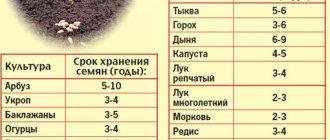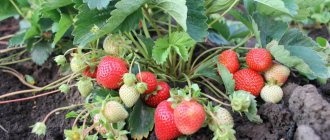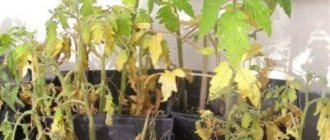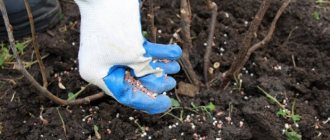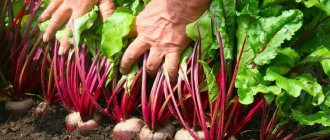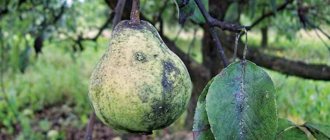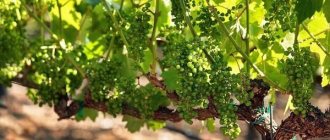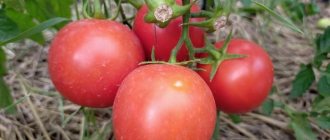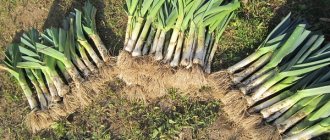How to fertilize apple trees: types of fertilizers
To enrich the soil with vital nutrients, a whole complex of fertilizers is used, which consists of:
- Organic fertilizers:
- manure - it contains many essential nutritional components for fruit trees, and also improves soil structures and its physical properties;
- humus is well-rotted last year's manure, which has a large amount of nutrients;
- bird droppings are a very effective fertilizer, used as a liquid fertilizer, and are quickly absorbed by the root system of the fruit tree;
- compost material prepared from peat and manure - used to fertilize all vegetation.
- Mineral fertilizers:
- ammonium nitrate is one of the most effective nitrogen fertilizers used for root feeding;
- carbamide, or urea , is an excellent tool for foliar feeding;
- superphosphates - used for both spring and autumn fertilization of apple trees;
- potassium sulfate is a gentle substance that is used to deliver potassium elements to vegetation; it does not contain chlorine compounds, therefore it can be used for spring and summer fertilizer;
- When fertilizing in autumn, you can use potassium salt ;
- wood ash is a complete replacement for potash and phosphorus fertilizers.
- Microfertilizers are those fertilizers that are required for fruit trees in very small quantities: boron, manganese, molybdenum, etc. They are quite important when there is a deficiency of any of these elements; they are most often used after prolonged use of mineral fertilizers.
- Bacterial fertilizers - used to improve soil structure, as well as to increase fertility. The most famous are nitragin, azotobacterin and phosphorobacterin.
Each of all types of fertilizing must be applied in a timely manner and in the correct dosages. For example, in the first years of life, young apple trees need phosphorus fertilizers, since phosphorus strengthens and develops the root system of the fruit tree.
To obtain a high yield, apple trees require phosphorus, potassium and nitrogen . Moreover, it is recommended to apply nitrogen only during spring feeding, and phosphorus and potassium fertilizers during the period of fruit ripening and when preparing the apple tree for winter.
And also in order to prepare the apple tree for winter, after introducing autumn fertilizing, it is necessary to protect the root system of the apple tree from freezing . Mulching is used for this.
Mulching apple trees and what is mulched with?
After adding all the necessary nutrients to the soil, the tree trunk circle is covered with a layer of mulch. Mulch is a special material that is used to protect the root system from freezing in winter, to retain moisture in the tree trunk for a longer time and to suppress weeds.
The following can be used as mulching material: decorative wood chips, sawdust, mown grass, special covering material, straw .
If you use mowed fresh green mass as a mulching material, then this type of mulching will also serve as additional fertilizing.
Decorative wood chips are a specially developed organic material that is sold in stores. Decorative wood chips are used not only to preserve the root system of the fruit tree, but also to create a beautiful landscape around the apple trees.
It is very important to know what fertilizers should be applied and how. The main methods of fertilizing are root feeding :
- Delivery of nutrients to the tree trunk,
- Fertilizer around the perimeter of the tree crown,
- Hole fertilizer for apple trees.
But root feeding of fruit trees is not always effective, since any structureless soil, especially very dry soil, actually blocks the tree’s absorption of all nutrients.
Very important! All kinds of chemical (mineral) fertilizers, if used incorrectly, often interact with each other.
In this case, improper root feeding can cause more harm than good. But do not despair, since there is another method of applying fertilizers that has been proven over the years - foliar feeding .
The importance of autumn fertilizing
By autumn, the reserves of mineral compounds are almost completely exhausted. And if the soil is dense, without moisture, and the nutrient supply is poor, the apple tree may not survive the winter.
Why feed apple trees and other pome crops in winter?
- Firstly, without additional restorative fertilizing, the root system suffers . Only in moist, loose and nutritious soil is it possible for fibrous roots to grow. The roots branch poorly - metabolic processes are disrupted.
- Secondly, with a deficiency of nutrients, the natural process of root fall is disrupted . Active growth of bark shoots occurs not only in spring, but also in summer and autumn.
Reference . Root fall is the death of the ends of small shoots of the root lobe (similar to the falling of leaves).
- Thirdly, lack of nutrition affects the winter hardiness of the plant . The apple tree will not have the strength to withstand lower temperatures, weathering of the soil, and spring flooding.
- Fourthly, after fruiting, fruit buds of the future harvest are laid.
When to carry out
At the end of August, the leaves are still green, and the apple tree, although it has given up its harvest, continues its active life cycle. In the last days of August or the very beginning of September, preparatory procedures for wintering can be carried out.
Important: the basic rule for autumn fertilization is that root fertilizing is carried out at least 3 weeks before the first frost and the first snowfall.
When the top layer freezes, it is too late to feed the tree, the fertilizers will not have time to dissolve, and the roots will not be able to fully absorb the nutrients.
Special food for seedlings
For good survival and development of the root system when planting apple tree seedlings in autumn, you need to prepare a planting hole and fill it with a nutrient substrate.
Planting an orchard begins, first of all,
with preparing the planting hole:
- the planting hole is dug 2-3 days before planting the seedlings;
- the average size of the hole is 60-75 cm in diameter, depth is at least 60 cm;
- pour up to 2 garden buckets of humus (well-rotted horse or cow manure) into the bottom of the hole;
- add 0.5 cups of superphosphate;
- pour a half-liter jar of stove soot or wood ash on top (can be replaced with 1 cup of dolomite flour);
- mix the dry mixture thoroughly with a shovel;
- the top layer of soil that remains after digging the hole is added to the hole;
- mix the nutrient mixture with the soil with a shovel;
- fill the planting hole with the remaining soil from above, with a layer of 10 cm;
- the last top layer is a mixture of compost and sand in a ratio of 1: 2;
- the mixture of compost and sand is evenly distributed almost to the top level of the pit;
- Fill the finished planting hole with water in the amount that can be absorbed (there is no need to dilute the slurry);
- When spilled, the substrate will sag and become saturated with moisture to the very bottom.
Attention! When planting an apple tree, you cannot add fresh manure to the substrate - the concentrated mixture will burn the young root shoots.
Starter feeding is enough for 2-3 years to ensure adequate nutrition for the tree.
Advice from an agronomist when planting an apple tree in the fall:
- Under no circumstances should the root collar be buried; consequences - the plant is stunted in growth, the frost resistance and durability of the adult tree are subsequently reduced, and the yield drops significantly;
- insufficient depth of the root collar (inflated position) is also dangerous; the root system suffers - young shoots are intensively formed, shoots grow and take root incorrectly (shallow occurrence).
Foliar feeding of apple trees
Foliar feeding is a method of fertilizing fruit trees, in which the fertilizer is applied not to the root, but to the leaf blades of the tree.
Advantages of this method:
- Leaves very actively absorb and assimilate nutrients .
- The effect of feeding is visible already on the 3rd day, but it only lasts about three weeks.
- Often, foliar feeding is used in emergency cases, when the tree urgently needs to be given some missing element.
such feeding regularly (once every three to four weeks), at least 2 times per season:
- The first time is when leaf blades are just beginning to form;
- The second time is when the apple tree is already blooming and the fruits are beginning to set.
Let's consider the issue of choosing microelements for spraying apple trees. The first thing you need to know is that fertilizers for foliar feeding should always be water-soluble .
For fertilizing with nitrogen, a 0.3% urea solution is very suitable for young trees, and for an older fruit tree, a 0.5% concentration of urea solution can be used.
For fertilizing with phosphorus - superphosphate.
Important! Superphosphates dissolve very poorly in water, so it is better to pour boiling water over it. For foliar feeding, it should be diluted to a concentration of 3%.
To fertilize with potassium, a one percent solution of potassium sulfate is used. You can also use ready-made complex preparations for foliar feeding, for example, Stimovit, which contains phosphorus, potassium, nitrogen, humic substances, as well as microelements (manganese, zinc, copper).
Do I need to water the apple tree after harvesting?
In summer, apple trees over 3 years old are no longer so demanding when it comes to watering. As a rule, they are watered only in very dry summers or during the period of fruit ripening.
Apple trees require abundant and regular moisture-recharging watering in the fall. This allows the tree to better prepare for winter and largely avoid frost damage.
Water-recharging irrigation is carried out after the leaves have fallen. Please note that different species and varieties shed leaves at different times, so watering in the fall is individual for each tree. If possible, water once a day, 2 buckets per tree, for a week. In most cases this is enough. You can learn more about moisture-recharging irrigation from this material >>>
Feeding apple trees in July with phosphorus-potassium fertilizers
It is recommended to feed apple trees in July during fruit formation with fertilizers containing phosphorus and potassium to improve metabolic processes in which phosphorus is the source of energy. And also to improve the taste properties of the future harvest, which is influenced by potassium elements.
At this time of year, it is better to feed the apple tree using the foliar method, spraying the leaf blades on both sides .
To maintain moisture and absorb a large amount of nutrients by the leaf blades, this procedure is best done in the early morning or evening. When the sun is not in the active zone and it is desirable that no rain is expected in the next 24 hours.
How to feed an apple tree in different seasons:
in spring
As the first spring feeding, it is best to use fertilizers, which will predominantly contain more nitrogen , which will activate vegetative processes in fruit trees. In this case, only the root method of introducing one of the types of nutrients is used:
- Humus - 3-4 buckets per apple tree;
- Ammonium nitrate - 40 grams around the perimeter of the tree crown;
- Urea – 600 grams.
When feeding apple trees in the spring, fertilizers should be distributed not near the trunk, but along the perimeter of the crown, that is, at a distance of up to half a meter from the trunk of the apple tree.
In summer
In the summer, all the necessary nutrients are used to improve the vegetation processes of the fruit tree: phosphorus-potassium fertilizers (100 grams of superphosphate + 70 grams of potassium sulfate + 10 liters of water), a solution of chicken manure or slurry, urea (100 grams +10 liters water). Read more about fertilizing in August here.
Important! It is best to carry out summer fertilizing with granular or powdered fertilizers during the rainy season, and use liquid fertilizing in dry weather.
Autumn and winter
In the autumn, apple trees need organic and mineral fertilizers , which will help the trees prepare for the coming winter.
Phosphorus and potassium fertilizers (superphosphates, potassium sulfates) are used as mineral fertilizers. Under no circumstances should nitrogen-containing substances be used in the fall, as they reduce the winter hardiness of fruit trees.
The most commonly used organic materials are humus, peat, and composts . It is recommended to apply such fertilizers directly 50 cm from the tree trunk along the entire perimeter of the apple tree crown into the soil structures when digging. Or when forming a hole around the perimeter of the crown, the depth of which should be at least 30-40 cm. In this case, 3-4 buckets of organic fertilizer are used per tree.
Treatment for diseases and pests in spring
In early spring, during the period from snow melting to bud break, the first treatment for diseases is carried out.
For this, copper sulfate (2-3% solution) or industrial preparations based on copper are used: Abiga-Pik, Indigo, OxyHOM, HOM. You can also use 3% Bordeaux mixture.
The next treatment of the garden is carried out 2-3 weeks after the first, when the buds have already burst, but the leaves have not yet appeared. At this time, use a 1% solution of Bordeaux mixture. Or chemical fungicides: Discor, Forecast, Skor, Horus, etc.
When working with chemicals, follow the instructions on the packaging.
When thawed patches appear around the trunk, trapping belts are installed on the trunks. This will help protect the plant from crawling pests.
- Hunting belt for protecting trees: when to apply and remove, how to make it yourself
In the spring, after the trees in the garden awaken, it is time to put on hunting belts. Do you use these devices?
Chemicals are also used in pest control: Aktara, Alatar, Aliot, Inta-Vir, Iskra Zolotaya, etc.
The second spraying against pests, if necessary, is carried out after flowering. But at this time it is better to abandon chemicals in favor of biological agents: Insetim, Lepidocid, Madex Twin, Fitoverm, etc.
- Calendar for garden treatment against diseases and pests
Don't wait for diseases and pests to take over your garden - be proactive!
Feeding with iron (iron sulfate)
Apple and pear trees are the fruit trees that are most susceptible to diseases such as chlorosis. Chlorosis is a deficiency of iron , which is manifested by underdevelopment of the leaf plate, that is, the green veins on the leaves fade due to the lack of chlorophyll pigment, which leads to early leaf fall. There is also a decrease in yield and underdevelopment of the fruits themselves.
To prevent and treat chlorosis, a remedy such as an aqueous solution of iron sulfate is most often used, or, as they say, add iron under the apple tree. At home, it can be prepared according to the following scheme: take a ten-liter bucket of water, add 2 teaspoons of citric acid to it, dissolve well and add one tablespoon of iron sulfate.
Spray apple trees with this solution in early spring or late autumn, after there are no leaves on the tree.
Methods of feeding trees according to the seasons
Nutrients should be added not only in the spring, but also in the summer, as well as in the process of preparing trees for winter in the fall.
Fertilizers for apple trees in spring
In the spring, these fruit trees need to be fertilized to stimulate the growth of new shoots, green mass, and the root system. Therefore, in the spring, fertilizers containing a large amount of nitrogen are applied to the tree trunk circles:
- urea - up to 0.5 kg for each apple tree;
- nitroammophoska + ammonium nitrate - 1.5 tbsp. l. in each trunk circle;
- humus - up to 50 kg for an apple tree.
This fertilizer is applied before spring digging - first it is scattered along the diameter of the tree trunk circle, and then embedded in the ground during digging.
During the period of active bud formation, apple trees are fertilized as follows:
- 1 glass of superphosphate and 70 g of potassium sulfate are dissolved in a bucket of water;
- 2 kg of liquid chicken manure are diluted in a bucket of water;
- 5 kg of slurry per bucket of water;
- 300 g of urea per bucket of water.
Up to 4 buckets of any of the described fertilizers are applied to each apple tree.
It is better to apply fertilizers in liquid form to garden crops in dry weather. If it rains, then it is better to scatter the fertilizing around the tree trunk in dry form.
After the trees begin to form ovaries, they can be fed with the following fertilizer:
- 0.5 kg of nitrophoska;
- 10 g sodium humate in dry form.
If the foliage on the trees grows sufficiently, then foliar fertilizing with urea can be done.
Summer feeding of apple trees
In summer, apple trees are fed with mineral fertilizers, which include phosphorus and potassium, as well as a small amount of nitrogen. During this period, fertilizers are applied several times at intervals of 10-14 days.
In mid-June, you can feed these fruit trees “leaf by leaf” with a urea solution so that they receive a sufficient amount of nitrogen. But foliar fertilizing is applied only in dry weather, since rains quickly wash away the fertilizer from the foliage.
Fertilizing apple trees in the fall
In autumn, trees are fertilized by applying fertilizer to the tree trunk.
Can be used:
- A complex of mineral fertilizers for fruit trees, which can be purchased at any gardening store. Such preparations are diluted or applied to the soil dry according to the instructions for use. The dosages specified in the description cannot be exceeded.
- 25 g of potassium salt and 50 g of superphosphate are diluted in a bucket of water and fertilized with apple trees. This amount of solution is enough for a square area.
It is also recommended to add calcium to the soil in the fall. And if the soil is acidified, then lime should be added to it.
It is important to fertilize apple trees correctly and at the appropriate time. Only then will the tree grow strong, resistant to disease, and its productivity will be high. Fruit trees that have enough nutrients throughout the season have high immunity, tolerate winter frosts well and are practically not attacked by pests.
Fertilizing with sodium humate
In order to speed up the fruiting process, increase the immunity of fruit trees and get rid of excess nitrates accumulating in fruits, a universal fertilizer such as sodium humate . There is an opinion that sodium humate helps the fruits of the apple tree to ripen.
To carry out spring foliar feeding, you need to dilute 3 grams of sodium humate in ten liters of water. The entire green crown of the tree is sprayed.
Sodium humate contains elements such as nitrogen, potassium, phosphorus, humic acids, as well as a large number of essential microelements. Fertilizing apple trees with this fertilizer in spring will help the apple tree gain strength, strengthen its immune defense and increase productivity.
How to feed apple trees with ash?
When preparing fruit trees for the winter, an organic fertilizer such as wood ash , which contains elements that are easily digestible for the root system of apple trees:
- Phosphorus;
- Potassium;
- Copper;
- Molybdenum;
- Boron;
- Calcium and manganese.
This fertilizer does not contain chlorine, which is a big advantage over using store-bought fertilizers. Ash is added before the autumn digging of the soil ; one kilogram of ash should be distributed per square meter.
Important! Despite the content of many useful nutrients in the ash, it must be applied in doses, and in no case should a large amount of this fertilizer be applied. Since wood ash is alkaline, in very large quantities it can be dangerous for earthworms and beneficial microorganisms.
As you can see, feeding apple trees with ash is not that difficult!
Potassium fertilizers for apple trees
Another universal fertilizer is Potassium Sulfate, which is rich in elements such as calcium, potassium, magnesium and sulfur. This fertilizer has a beneficial effect on the growth and development of fruit crops and improves the taste of fruits. It can be used as a top dressing regardless of the time of year, but most often it is applied in the fall.
A small amount of granular fertilizer is distributed evenly around the perimeter of the trunk circle of the apple tree at a distance of 15-20 cm from the trunk.
More precise dosages are described in detail in the instructions for use. Potassium preparations increase winter hardiness and improve soil structure, making them more fertile , which leads to increased yield and taste of fruits.
Iron and copper sulfate.
Sodium humate.
Green manure.
Potash fertilizers
Preparing to apply fertilizers
Before adding organic matter or mineral mixtures, the garden needs to be cleaned and prepared. Preparatory procedures are carried out in several stages.
Sanitary pruning and cleaning of the “territory”
It is important to prune the apple tree before the first frost :
- in winter, cut off all dry and outdated branches (sick, broken);
- old branches are thinned out and shortened;
- branches that are too long are also shortened (preventing breaks under the weight of the fruit);
- cut off the fattening sprouts (the branches grow vertically, unnecessarily shade the branches, and prevent flowering);
- to reduce the crown (the optimal height of an adult tree is 3.5-4 m), the top of the crown is trimmed;
- after trimming, the sections are lightly dried for 2 hours;
- the cut areas are treated with a special garden putty, copper sulfate solution or garden pitch;
- in the tree trunk circles, all weeds, debris, fallen leaves, and rotten apples are removed;
- Rotten or dried fruits are removed from the tree;
- the soil in the root zone is loosened with a flat cutter or forks to a depth of no more than 20 cm;
- on dug up tree trunk circles, insect pests will appear on the surface and die during the first frost;
- mulch the root zones with compost or humus (rotted manure).
